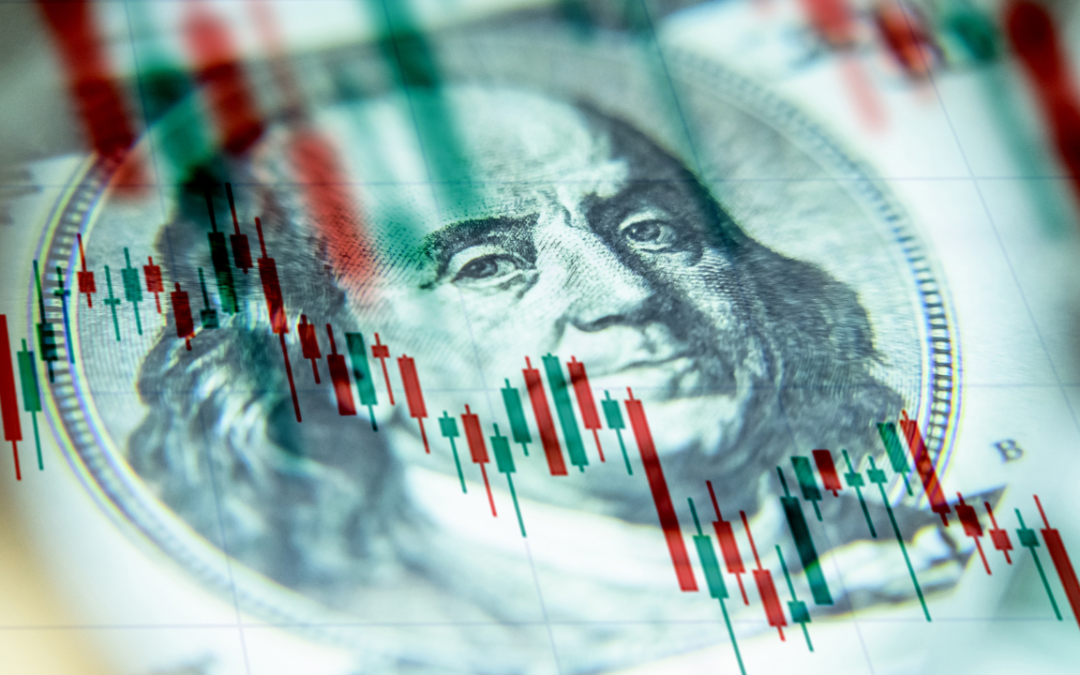Lionel Shriver’s 2016 dystopian novel ‘The Mandibles’ describes the US defaulting on its debts, resulting in the collapse of the once-mighty US dollar and the ushering in of a period of deep secular decline.
Comparisons with the present are tempting given the pandemic crisis as well as social and political unrest in America. Indeed, the dollar’s 10% depreciation from mid-March to mid-September has been touted as evidence of its pending collapse, even the end of its preeminent role as the world’s reserve currency.
For investors based outside the US, these dramatic claims warrant careful assessment. Many popular investments, including US stocks, Treasuries and gold, are priced in dollars. Despite strong market gains, the greenback’s decline since March has had a corrosive effect on net returns when dollar-denominated performance is translated back into appreciating currencies, such as the euro, yen or sterling. Should the dollar’s decline continue when US stock or bond performance falters, global investors could be in for a rude awakening.
While it is tempting to paint a picture of an unfolding dollar crisis, history and evidence suggest hyperbole is unwarranted.
For one, reserve currencies are rarely displaced. In modern history, there have only been two great reserve currencies, sterling and the dollar. Sterling’s loss of reserve status was slow and tortuous, like the decline of the British Empire itself. It took two ruinous world wars for it to cede ground to the dollar as the primary currency of international trade.
Corelli Barnett wrote of the immediate post-war period: “The dream of Britain as a global power also included the ‘invisible empire’ of the sterling area, to which Britain chose to play the banker. This was despite the fact that her reserves of gold and dollars were well known in Whitehall to be far too scanty for this role.”
Dollar sceptics point to mounting US government debt as the greatest threat to its reserve currency status. Indeed, the US budget deficit is set to reach a startling 15% of GDP this year. At the same time, however, the US Treasury can borrow at less than 1% courtesy of the Fed’s aggressive purchases of US debt as part of its quantitative easing programme. So long as the Fed remains committed to asset purchases, the bond market is unlikely to be the catalyst for a dollar collapse.
Significantly, the US enjoys an entrenched position of dollar privilege, which will be difficult to unwind quickly. Dollarization in recent decades has seen many countries and their savers align their interests with the US dollar in order to benefit from greater financial stability and lower borrowing costs. International trade receipts remain largely denominated in US dollars. As just one example, 60% of Turkey’s imports are priced in US dollars even though only 6% of its total imports come from the US.
Dollar invoicing is not just a matter of convenience, it also as a result of virtuous network effects, akin to what many of us experience on social media platforms. The more of us that use the instrument, the more valuable its use becomes.
Some observers argue that a more serious threat to the dollar comes from China’s renminbi. It is true that deliberate Chinese policy has ensured its currency is now used in 25% of its trade, up from almost zero in 2010. Full global adoption of the renminbi, however, requires its convertibility and the liberalization of China’s capital account (i.e., few restrictions on taking money in and out of the country). It also requires stability and trust in Chinese financial institutions, including its central bank. Whereas the US Fed is respected because it is credibly independent, the same is not the case for China’s central bank.
Rather than heralding its historic demise, the US dollar’s recent modest decline is better explained by interest rate differentials. One year ago, the 10-year US Treasury note offered more than two percentage points more yield than the same maturity German Bund and a euro bought just 1.10 dollars. A year later, the gap has narrowed to 1% and today the euro is worth about 8% more in dollar terms.
Moreover, the dollar’s recent weakness may prove temporary. Even though the Fed has committed itself to keeping rates low until inflation exceeds its 2% target, it has stopped short of adopting negative interest rates. Meanwhile, the European Central Bank could still pursue an even deeper negative rate policy. If so, then interest differentials would tip back in favour of the US dollar.
While a narrative of dollar epochal decline may tempt some, the historical record and structure of the global trading and financial systems suggest that is unlikely anytime soon. Despite rising US social and political uncertainties, other are also beset by structural challenges. Japan, the Eurozone and China are confronted by poor demographics and weakening trend growth. None can offer the depth of homogenous bond market liquidity found in the US, nor the vitality of its equity markets with their innovative companies and high-quality managements.
The dollar may have its shortcomings, but no other region or country offers a compelling alternative as a reserve currency. Lionel Shriver’s vision of a declining America and failed currency might make for entertaining reading, but the evidence suggests it will remain fiction for longer.



